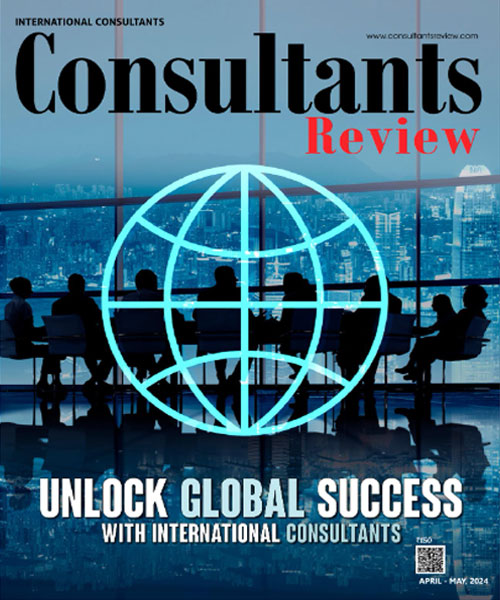Project Management: A Systematic Approach from Planning to Implementation
By Nitin Shetty, Asst Vice President - EPMO,
Process Delivery & innovation, HDFC ERGO General Insurance Company

Nitin Shetty, Asst Vice President - EPMO, Process Delivery & innovation, HDFC ERGO General Insurance Company
The term “Project Management” is usually associated with large projects in the IT or engineering domain, requiring development and implementation of systems by IT / engineering firms. However, the actual definition of a project relates to any major initiative that is carried out across industries. With a major emphasis on customer centricity, the services industry has been driving a lot of initiatives both with a view on improving customer delight as well as internal processes & systems targeting process efficiencies and automation.
Project management is primarily a discipline of planning, organizing and managing people, resources and time to ensure smooth and successful execution and implementation of project goals.
“The P in PM is as much about “People Management” as it is about “Project Management” – Cornelius Fichtner
All such initiatives, to be referred as “Projects” requires a meticulous amount of planning, clarity on targeted objectives, resource & expense management, inter-departmental liaisioning, progress monitoring and reporting. Unlike industries such as IT and engineering, where employees are ingrained with the concept of project monitoring, life is a bit different when it comes to managing projects in other industries.
With the experience of having worked with companies in the financial services industry, the objective of this article is to list down a few challenges being faced while driving projects along with the major Do’s and Dont’s which have helped in shaping and providing the right direction towards successful implementation of projects.
Every project comes with its own set of challenges, which may play a pivotal role in defining the success of a project. Surely many project managers may be able to relate with some of the challenges listed below:
(i) Lack of structure while working on projects
(ii) Dependencies on multiple departments / functions
(iii) Constant change in priorities, impacting project execution
(iv) Multiple projects with the same set of resources
(v) Availability of dedicated resources from each function
(vi) Daily operations taking priority over project related work
(vii) Allocation of budgets
(viii) Limited resources
(ix) Frequent change in requirements
The saving grace is that mindsets are now changing and companies have started adopting a more serious approach towards management of critical projects. Many organizations now have a dedicated Project Management Office (PMO) which manages and monitors progress and completion of critical projects within the organization.
Experience over the years has thought us some mantras, which a project manager can look at, to mitigate some of the above challenges faced:
a) Top Management focus – Life for a project manager gets much easier if there is significant push and drive from the top management. Ensure the same is communicated down the line, setting the stage for cooperation from all stakeholders.
b) On boarding of stakeholders – Success of a project is not managed by the project manager alone. It is managed by the team of stakeholders. It is imperative to get all stakeholders on board the senior management expectations, plan of execution along with timelines, as the actionables need to be owned by each stakeholder, keeping the final goal in mind.
c) Prioritization – In the midst of multiple projects being carried out along with daily operations, it is critical to set a priority ranking for the project being executed. This will help all stakeholders plan and schedule their actionables with strict adherence to timelines.
d) Communication – A channel of communication needs to be maintained with all the stakeholders on a daily / regular frequency basis, to now allow loss of focus on the project execution. Any lapse on this area could derail the project momentum.
e) Project tracker – Define a project tracker, which clearly lists down all major milestones, tasks and actionables, person responsible for closure of action, tentative timeline for completion and other dependent actionables. Updation of trackers cannot be left for some other day.
“Nothing is particularly hard if you divide it into small jobs” – Henry Ford
f) Project monitoring – Consider the project tracker as your bible. A project manager needs to look at the project tracker religiously on a daily basis, to be on top of approaching deadlines, impact on dependent actionables / tasks and identify any new possible hurdles.
g) Project Update Reporting – Keep the project dashboard simple. A summary of updates of the process with status of each milestone keeps everyone on their toes at all times. The status needs to be presented as-is, clearly identifying delays if any and the impact of the delay. Any key factor or red flags, required to be brought to the notice of the senior management needs to be highlighted in every update.
h) Escalation Matrix – Although undesirable, escalations are part of every project. The project manager cannot let delays in actionables unattended and needs to highlight and escalate to the concerned stakeholders. Do not hesitate to escalate. Any unattended delays could have a spiral impact on the overall progress of the project.
i) Do not micro-manage – A project manager is the driver of the project. Important that he clearly understands his role as well as the role of the stakeholders. Micro-managing a project can be detrimental to the health of a project; individual actionables are best left to be managed by the concerned stakeholders. For a services related project, it is crucial to define SPOCs (Single Point of Contact) for each function, who remains the single nodal point for a project manager to liaise with.
j) Contingency – Like in all aspects of life, keep buffer available in terms of all resources: time, people, change in requirements as a project manager is likely to face unanticipated obstacles such as sudden unavailability of resources, new requirements getting incorporated, increased costs, unexpected increase in execution of certain tasks.
This article is purely from the experiences and challenges faced while working on projects with multiple organizations. Hopefully this will help in handling certain challenges currently being faced while managing projects.








